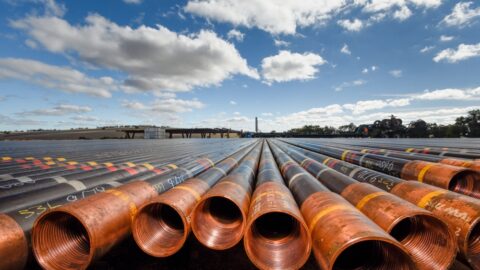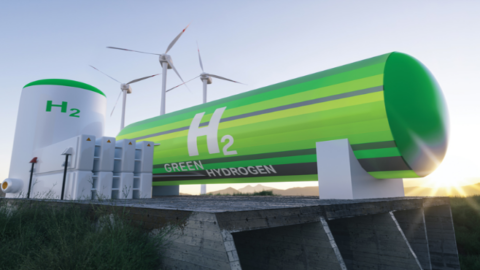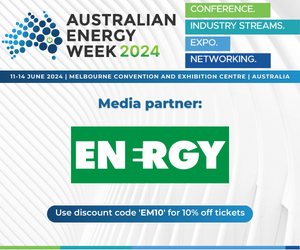by Lauren DeLorenzo, Journalist, Energy magazine
In 2021, the Federal Government unveiled its long-awaited climate change strategy, which hailed carbon capture and storage (CCS) technology and clean hydrogen investment as key pillars of Australia’s emissions reduction approach. But research from The Australian National University (ANU) warns that this strategy overlooks the risk of hidden emissions from fossil fuel-based hydrogen production.
Hydrogen can be produced either by natural gas with CSS technology (blue hydrogen) or through renewable energy-driven electrolysis (green hydrogen). Australia’s hydrogen strategy doesn’t make a distinction between the two processes, instead referring to both as clean hydrogen.
However, a study from ANU has found that the production of blue hydrogen poses significant risks to the climate through hidden fugitive emissions, while green hydrogen does not carry the same danger.
Study co-author and fellow at ANU’s Crawford School of Public Policy, Dr Thomas Longden, said creating an industry around blue hydrogen potentially poses risks to Australia’s target of reaching net zero emissions by 2050.
“By using the term ‘clean’ hydrogen for both renewable-based and natural gas-based hydrogen, the danger is that we could establish a hydrogen industry that actually leads to an increase in emissions,” Dr Longden said.
Understanding fugitive emissions
Fugitive emissions refer to methane that is released during the extraction and processing of natural gas. These emissions are considered a potent greenhouse gas, and emission rates can vary widely between extraction sites, depending on the process used.
Study co-author from the ANU School of Engineering, Dr Fiona Beck, said that fugitive emissions need to be rapidly reduced to limit further global temperature increases. “Fugitive emissions are the second-largest source of methane pollution, and rates are rising due to the expansion of unconventional natural gas production that uses fracking,” Dr Beck said.
At COP26 in Glasgow, over 100 countries (excluding Australia) agreed to cut methane emissions by 30 per cent on 2020 levels before 2030.
“Developing a new, large-scale, low- emissions hydrogen industry based on natural gas undermines these efforts and ignores the dangers that fugitive emissions pose to our environment,” Dr Beck said.
“Our work highlights that large investment in fossil fuel-based hydrogen with CCS could be risky, locking in a new fossil fuel industry with significant emissions, and one that is likely to be out-competed by renewable technologies in the future.”
What about CCS?
The Federal Government’s Technology Investment Roadmap identifies CCS as a priority technology, with huge investments being made in rolling out large-scale supporting infrastructure. Yet the ANU study suggests that even with the use of CCS technology, emissions from fossil fuel-based hydrogen production could be substantial.
“The extent of the emissions is often downplayed or ignored in governments’ public statements about future hydrogen supply chains, with many treating ’low- emission’ and ’zero-emission’ production as functionally equivalent or interchangeable,” Dr Beck said.
“It is critical that we use emission intensity (i.e. the amount of greenhouse gases released per unit of energy of fuel produced), not labels when assessing hydrogen production pathways.”
The rate of capture for CCS can vary widely depending on the type of technology used, at what point in the process the carbon is captured, and how the carbon is stored after it is collected.
Dr Beck said that the wide range of capture rates, along with a lack of emissions intensity information, can obscure accurate measures of CCS efficiency.
“The emissions intensity of fossil fuel-based hydrogen produced with CCS technologies are rarely reported, which can give an optimistic view of the emission reductions that can be achieved,” Dr Beck said. CCS does not capture fugitive emissions, which often go unaccounted for.
“To allow a true assessment of the emissions associated with hydrogen production, the emissions intensity should include fugitive emissions (methane lost to leakage during the extraction and processing of fossil fuels), as well as emissions due to energy used to capture, compress, transport and store the captured CO2,” Dr Beck said.
Most CCS technologies have a capture rate of between 50 to 90 percent process emissions (excluding fugitive emissions). But the higher the capture rate, the more expensive the CCS technology becomes, further limiting its capacity for widespread use.
“High capture rates, above 90 percent, are needed for natural gas-based hydrogen to be considered low-carbon,” Dr Longden said.
“CCS is an expensive option for emissions reduction, with most estimates for the cost of carbon capture being above $82 per tonne of carbon dioxide (CO2). These estimates increase to about $109 per tonne of CO2 for high capture rates.”
Challenges to fossil fuel-based hydrogen production
Achieving significant emission reduction rates through CCS would require a number of costly steps, according to the co-authors of the study.
First, CCS technology would need to be applied at an individual plant level to capture CO2 from waste gases. Then there’s the infrastructure required to store the captured CO2, which usually means a pipeline network or CO2 tankers would be needed to transport the gas to the storage site.
“To minimise the emissions of the CCS process, renewable energy could be used to power the additional processes needed to capture, compress, transport and store the CO2, which could add to the overall cost,” Dr Beck said.
“This is rarely factored into the costs of ‘blue’ hydrogen, as usually the methane is used to produce power on site.” Dr Beck said that an efficient emissions reduction CCS system would also need to follow strict regulations on the amount of fugitive emissions it produces.
Finally, power plants would need to verify that their processes are not leaking CO2 back into the atmosphere, which necessitates additional infrastructure and monitoring.
How does it compare to renewable hydrogen?
The challenge to deploying low-emissions blue hydrogen at scale is how to do it in a cost-effective manner. While it’s currently cheaper than renewable hydrogen, the cost of natural gas-based hydrogen is expected to remain stagnant.
However, there is a clear pathway to cost reduction for renewable hydrogen. The cost of renewable hydrogen is dependent on the cost of electrolyzers and the expense of renewable electricity, which has seen a huge decrease over the last two decades and is expected to continue to become more affordable.
With economies of scale, the cost of electrolysers is also projected to fall. “Our analysis indicates that renewable hydrogen could out-compete fossil fuel-based low emissions hydrogen with CCS in the future, raising the risk of stranded assets given the long lifetime of fossil fuel-based hydrogen production plants,” Dr Beck said.
Renewable hydrogen also beats fossil fuel-based hydrogen when it comes to comparing emissions intensity. The researchers calculated that with capture rates around 60 per cent, the emissions intensity of fossil fuel-based hydrogen is 25 per cent lower than burning natural gas directly, (assuming the IPPC default methane leakage rate of 1.7 per cent).
With capture rates of 90 per cent, emissions intensity would be 66 per cent lower than burning natural gas. “It is worth noting that in calculating this we are using a 100-year global warming potential for methane,” Dr Beck said.
“It has been argued that, since methane is a short-lived gas with large short-term effects on the climate, a 20-year global warming potential should be used when calculating emissions.”
When using the 20-year global warming potential, researchers found that producing hydrogen with a 60 per cent carbon capture rate would only result in an eleven per cent reduction in emissions intensity compared with burning gas directly.
With capture rates of over 90 per cent, this translates to a 40 per cent emissions intensity reduction. Dr Beck said that by this same measure, “Renewable ‘green’ hydrogen has zero emissions intensity and offers the most benefit for decarbonisation.”
The most effective methods of decarbonising
Hydrogen and its derivatives, such as ammonia and synthetic methanol, could be used as fuel to help abate emissions in sectors with intense energy requirements. “Hydrogen fuels could also allow large-scale storage and trade in renewable energy,” Dr Beck said.
“This is particularly interesting for Australia, which has abundant renewable resources and existing energy trade relationships with partners in Asia-Pacific and beyond.”
Currently, two per cent of global emissions can be attributed to fossil fuel production of hydrogen for industrial use.
“Replacing Australia’s current energy exports of coal and LNG with renewable fuels, and processing our metal ores onshore with renewable energy and renewable hydrogen, could displace roughly five per cent of global emissions, or eleven per cent of the emissions in Asia Pacific, using 2019 values,” Dr Beck said.


















